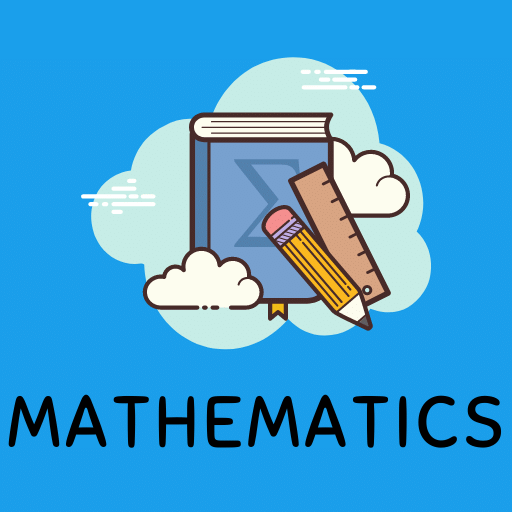Best Study Material for Class 9 Exam
Class 9 Exam > Class 9 Notes > Mathematics (Maths) Class 9 > RS Aggarwal Solutions: Linear Equations in Two Variables- 2
RS Aggarwal Solutions: Linear Equations in Two Variables- 2 | Mathematics (Maths) Class 9 PDF Download
| Download, print and study this document offline |
Please wait while the PDF view is loading
Page 1
Q u e s t i o n : 8
Draw the graph of each of the following equations.
i
x = 4
ii
x + 4 = 0
iii
y = 3
iv
y = –3
v
x = –2
vi
x = 5
vii
y + 5 = 0
viii
Page 2
Q u e s t i o n : 8
Draw the graph of each of the following equations.
i
x = 4
ii
x + 4 = 0
iii
y = 3
iv
y = –3
v
x = –2
vi
x = 5
vii
y + 5 = 0
viii
y = 4
S o l u t i o n :
i
The equation of given line is x = 4. This equation does not contain the term of y. So, the graph of this line is parallel to y-axis
passing through the point 4, 0
.
ii
The equation of given line is x + 4 = 0 or x = –4. This equation does not contain the term of y. So, the graph of this line is parallel
to y-axis passing through the point – 4, 0
.
iii
The equation of given line is y = 3. This equation does not contain the term of x. So, the graph of this line is parallel to x-axis
passing through the point 0, 3
.
Page 3
Q u e s t i o n : 8
Draw the graph of each of the following equations.
i
x = 4
ii
x + 4 = 0
iii
y = 3
iv
y = –3
v
x = –2
vi
x = 5
vii
y + 5 = 0
viii
y = 4
S o l u t i o n :
i
The equation of given line is x = 4. This equation does not contain the term of y. So, the graph of this line is parallel to y-axis
passing through the point 4, 0
.
ii
The equation of given line is x + 4 = 0 or x = –4. This equation does not contain the term of y. So, the graph of this line is parallel
to y-axis passing through the point – 4, 0
.
iii
The equation of given line is y = 3. This equation does not contain the term of x. So, the graph of this line is parallel to x-axis
passing through the point 0, 3
.
iv
The equation of given line is y = –3. This equation does not contain the term of x. So, the graph of this line is parallel to x-axis
passing through the point 0, – 3
.
v
The equation of given line is x = –2. This equation does not contain the term of y. So, the graph of this line is parallel to y-axis
passing through the point – 2, 0
.
Page 4
Q u e s t i o n : 8
Draw the graph of each of the following equations.
i
x = 4
ii
x + 4 = 0
iii
y = 3
iv
y = –3
v
x = –2
vi
x = 5
vii
y + 5 = 0
viii
y = 4
S o l u t i o n :
i
The equation of given line is x = 4. This equation does not contain the term of y. So, the graph of this line is parallel to y-axis
passing through the point 4, 0
.
ii
The equation of given line is x + 4 = 0 or x = –4. This equation does not contain the term of y. So, the graph of this line is parallel
to y-axis passing through the point – 4, 0
.
iii
The equation of given line is y = 3. This equation does not contain the term of x. So, the graph of this line is parallel to x-axis
passing through the point 0, 3
.
iv
The equation of given line is y = –3. This equation does not contain the term of x. So, the graph of this line is parallel to x-axis
passing through the point 0, – 3
.
v
The equation of given line is x = –2. This equation does not contain the term of y. So, the graph of this line is parallel to y-axis
passing through the point – 2, 0
.
vi
The equation of given line is x = 5. This equation does not contain the term of y. So, the graph of this line is parallel to y-axis
passing through the point 5, 0
.
vii
The equation of given line is y + 5 = 0 or y = –5. This equation does not contain the term of x. So, the graph of this line is parallel
to x-axis passing through the point 0, – 5
.
Page 5
Q u e s t i o n : 8
Draw the graph of each of the following equations.
i
x = 4
ii
x + 4 = 0
iii
y = 3
iv
y = –3
v
x = –2
vi
x = 5
vii
y + 5 = 0
viii
y = 4
S o l u t i o n :
i
The equation of given line is x = 4. This equation does not contain the term of y. So, the graph of this line is parallel to y-axis
passing through the point 4, 0
.
ii
The equation of given line is x + 4 = 0 or x = –4. This equation does not contain the term of y. So, the graph of this line is parallel
to y-axis passing through the point – 4, 0
.
iii
The equation of given line is y = 3. This equation does not contain the term of x. So, the graph of this line is parallel to x-axis
passing through the point 0, 3
.
iv
The equation of given line is y = –3. This equation does not contain the term of x. So, the graph of this line is parallel to x-axis
passing through the point 0, – 3
.
v
The equation of given line is x = –2. This equation does not contain the term of y. So, the graph of this line is parallel to y-axis
passing through the point – 2, 0
.
vi
The equation of given line is x = 5. This equation does not contain the term of y. So, the graph of this line is parallel to y-axis
passing through the point 5, 0
.
vii
The equation of given line is y + 5 = 0 or y = –5. This equation does not contain the term of x. So, the graph of this line is parallel
to x-axis passing through the point 0, – 5
.
viii
The equation of given line is y = 4. This equation does not contain the term of x. So, the graph of this line is parallel to x-axis
passing through the point 0, 4
.
Q u e s t i o n : 9
Draw the graph of the equation y = 3x.
From your graph, find the value of y when
i
x = 2
ii
x = –2.
S o l u t i o n :
Given equation: y = 3x
When x = -2, y = -6.
When x = -1, y = -3.
Thus, we have the following table:
Read More
|
40 videos|419 docs|51 tests
|
FAQs on RS Aggarwal Solutions: Linear Equations in Two Variables- 2 - Mathematics (Maths) Class 9
| 1. What are linear equations in two variables? |  |
| 2. How can we solve linear equations in two variables? |  |
Ans. To solve linear equations in two variables, we can use various methods such as substitution, elimination, and graphing. In the substitution method, we solve one equation for one variable and substitute that value into the other equation. In the elimination method, we add or subtract the equations in a way that eliminates one variable. Graphing involves plotting the equations on a coordinate plane and finding the point of intersection.
| 3. Can linear equations in two variables have multiple solutions? |  |
Ans. Yes, linear equations in two variables can have multiple solutions. When the equations represent parallel lines, they do not intersect, indicating no solution. When the equations represent the same line, they have infinitely many solutions, as every point on the line satisfies both equations. Otherwise, the equations have a unique solution, representing the point of intersection.
| 4. How are linear equations in two variables used in real-life situations? |  |
Ans. Linear equations in two variables are widely used in various real-life situations. They can be used to represent and solve problems related to distance, speed, time, cost, profit, and many other quantities. For example, they can help determine the number of items that need to be sold to break even or find the optimal solution for a production process.
| 5. Can linear equations in two variables be represented graphically? |  |
Ans. Yes, linear equations in two variables can be represented graphically. By plotting the equations on a coordinate plane, we can visualize the lines they represent. The point of intersection between the lines corresponds to the solution of the equations. Graphical representation can provide a visual understanding of the relationship between the variables and help analyze the equations more easily.
Related Searches

























